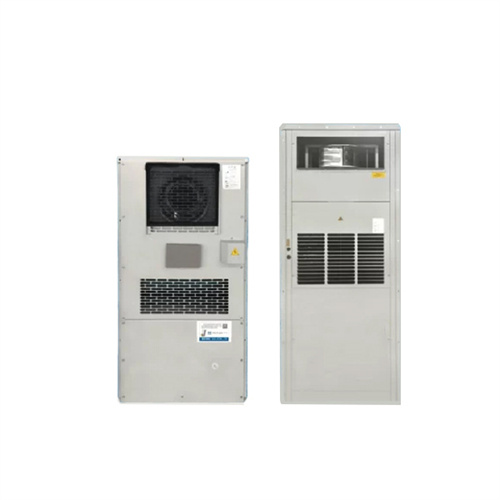Microgrid components Mozambique

Distributed generation and microgrids for improving electrical
Distributed generation and microgrids for improving electrical grid resilience: Review of the Mozambican scenario Abstract: In sub-Saharan Africa, the electrical infrastructure is growing at a rapid rate, mainly through the construction of new regional interconnectors and

Distributed generation and microgrids for improving electrical
Distributed generation and microgrids for improving electrical grid resilience: Review of the Mozambican scenario Abstract: In sub-Saharan Africa, the electrical infrastructure is growing

Mozambique Presents $500M Plan for Off-Grid, Mini-Grid and Microgrid
FUNAE, Mozambique''s sustainable energy development fund, aims to build hydro power mini-grids with a combined capacity of 1.01 GW in 332 villages. The plan also entails deploying 343 solar PV systems in rural communities, including 10 solar-storage mini or microgrids with capacities ranging from 1-3 MW, as well as another 111 ranging from 1

Grid Interconnection for Mini-grids in Mozambique
This article provides an overview of policy and regulatory framework for grid interconnection in Mozambique and is targeted at private sector, donor organisations, NGOs, Government bodies and other stakeholders who are interested in getting a deeper understanding of the nano/mini-grid market in Mozambique.

Challenges and Opportunities for the Nano/Mini-Grid Sector in Mozambique
This article provides an overview of opportunities and challenges for nano/mini-grid development in Mozambique and is targeted at private sector, donor organisations, NGOs, Government bodies and other stakeholders who are interested in getting a deeper understanding of the nano/mini-grid market in Mozambique.

Supporting mini grid development in Mozambique:
The negotiations allowed for a preliminary quality assurance of the technical proposals, as it was the first time Mozambique would be building hybrid mini grids of this calibre. The contracts were awarded to two

Nano/Mini-Grid Market Landscape in Mozambique
Mozambique Energy for All, ProEnergia: One of Mozambique''s largest electrification projects, ProEnergia finances the construction of up to six mini-grids, each connecting 431 households and 117 commercial/institutional users in communities where grid expansion and densification is not economically feasible.

Challenges and Opportunities for the Nano/Mini-Grid Sector in
This article provides an overview of opportunities and challenges for nano/mini-grid development in Mozambique and is targeted at private sector, donor organisations, NGOs, Government

Challenges and Opportunities for the Nano/Mini-Grid Sector in Mozambique
This article provides an overview of opportunities and challenges for nano/mini-grid development in Mozambique and is targeted at private sector, donor organisations, NGOs, Government

Enabling factors for the development of mini-grid solutions in
In Mozambique, there is a region where some consumers consider the mini-grid to be common property, and they are not always convinced or well-informed of the necessity to pay to cover expenditures. For instance, if mini-grids are powered entirely by renewable energy (wind, solar or hydro), the public may believe the service should be supplied

Minigrids
The programme aims to increase the electrification rate in rural areas in Mozambique using solar PV mini-grids with storage mini-grids developed by IPPs. The IPPs will ensure the financing, operation and maintenance of the power generation facilities, as well as the sale of electricity directly to the end-consumer.

Mozambique Presents $500M Plan for Off-Grid, Mini
FUNAE, Mozambique''s sustainable energy development fund, aims to build hydro power mini-grids with a combined capacity of 1.01 GW in 332 villages. The plan also entails deploying 343 solar PV systems in rural

Policy and Regulatory Framework for Mini/Nano Grids in Mozambique
This article provides an overview of the policy and regulatory framework for nano/mini-grids in Mozambique and is targeted at private sector, donor organisations, NGOs, Government bodies and other stakeholders who are interested in getting a deeper understanding of the nano/mini-grid market in Mozambique.

Supporting mini grid development in Mozambique: planning and
The negotiations allowed for a preliminary quality assurance of the technical proposals, as it was the first time Mozambique would be building hybrid mini grids of this calibre. The contracts were awarded to two construction consortias, which

3 FAQs about [Microgrid components Mozambique]
How did Funae and Enabel prepare for the mini-grid projects?
Another critical step in the preparations for the mini-grid projects was the selection of the beneficiaries in the 5 communities. Because of budget constraints, FUNAE and Enabel decided to continue constructing 5 mini-grids but to only connect ca. 40% of the target population in the first phase.
Will Mozambican achieve universal energy access by 2030?
An important task, considering that the Mozambican government has set the target to realize universal energy access by 2030. The project Renewable Energy for Rural Development, Phase 2 (RERD2+) of Enabel aims to support FUNAE in the development and operation of sustainable energy services in rural areas.
When will Funae & Enabel complete the 5 mini-grids?
Recently, FUNAE and Enabel engineers were together with the supervisor, who guarantees the daily monitoring of the works, on the field to inspect the delivered containers and evaluate the quality of the executed works. The completion of the 5 mini-grids is expected between the last quarter of 2023 and first quarter of 2024.
Related Contents
- Microgrid components and structure
- Eswatini microgrid components
- What is the power supply distance of the microgrid
- Certs Microgrid Structure
- Microgrid Reviews
- Microgrid Information
- Microgrid University Rankings
- Low voltage DC distribution network and microgrid
- Smart Microgrid Virtual Power Plant
- Android Photovoltaic Microgrid Android
- Photovoltaic power generation microgrid control solution
- Microgrid Comprehensive Assessment Report Template